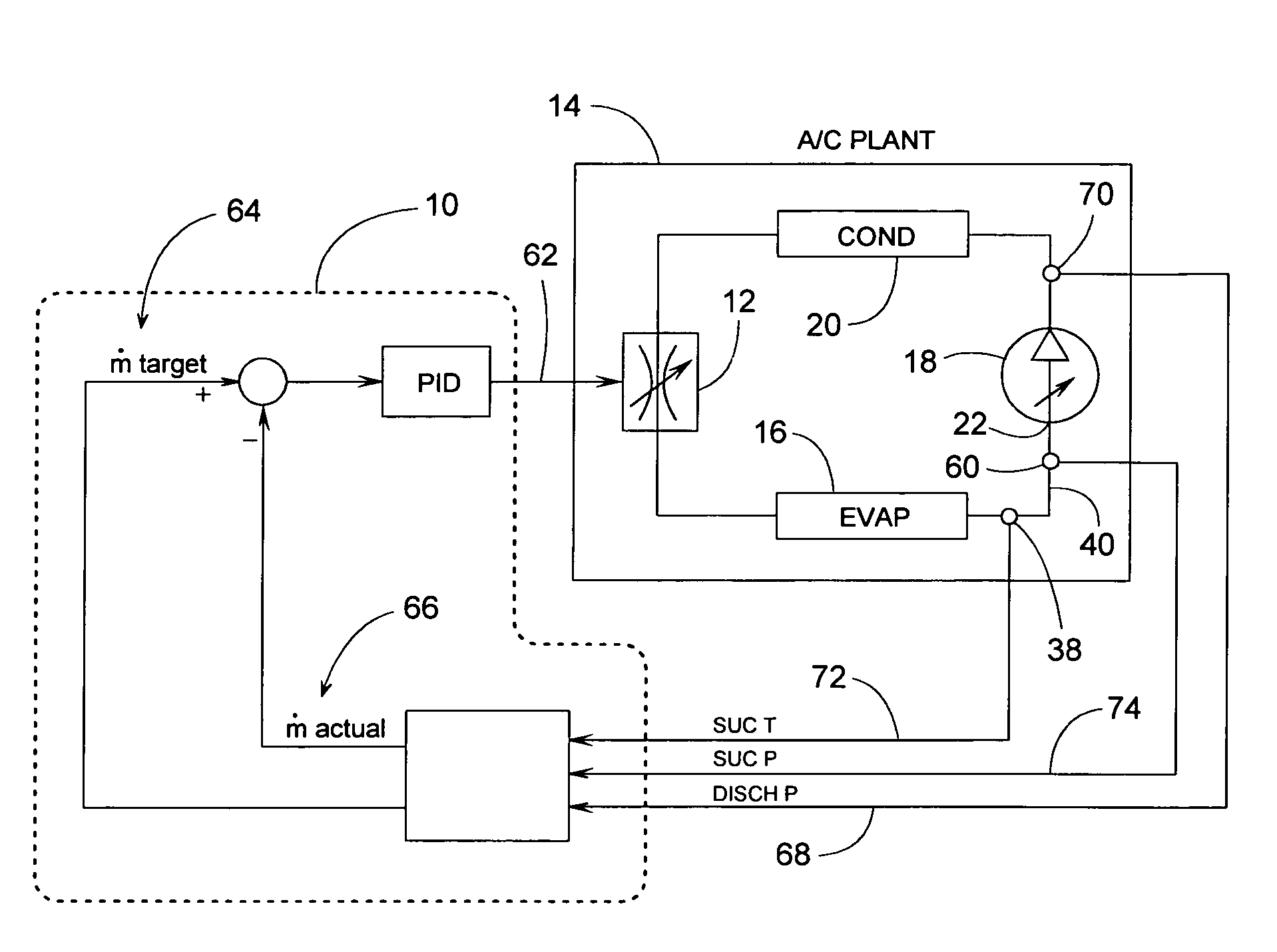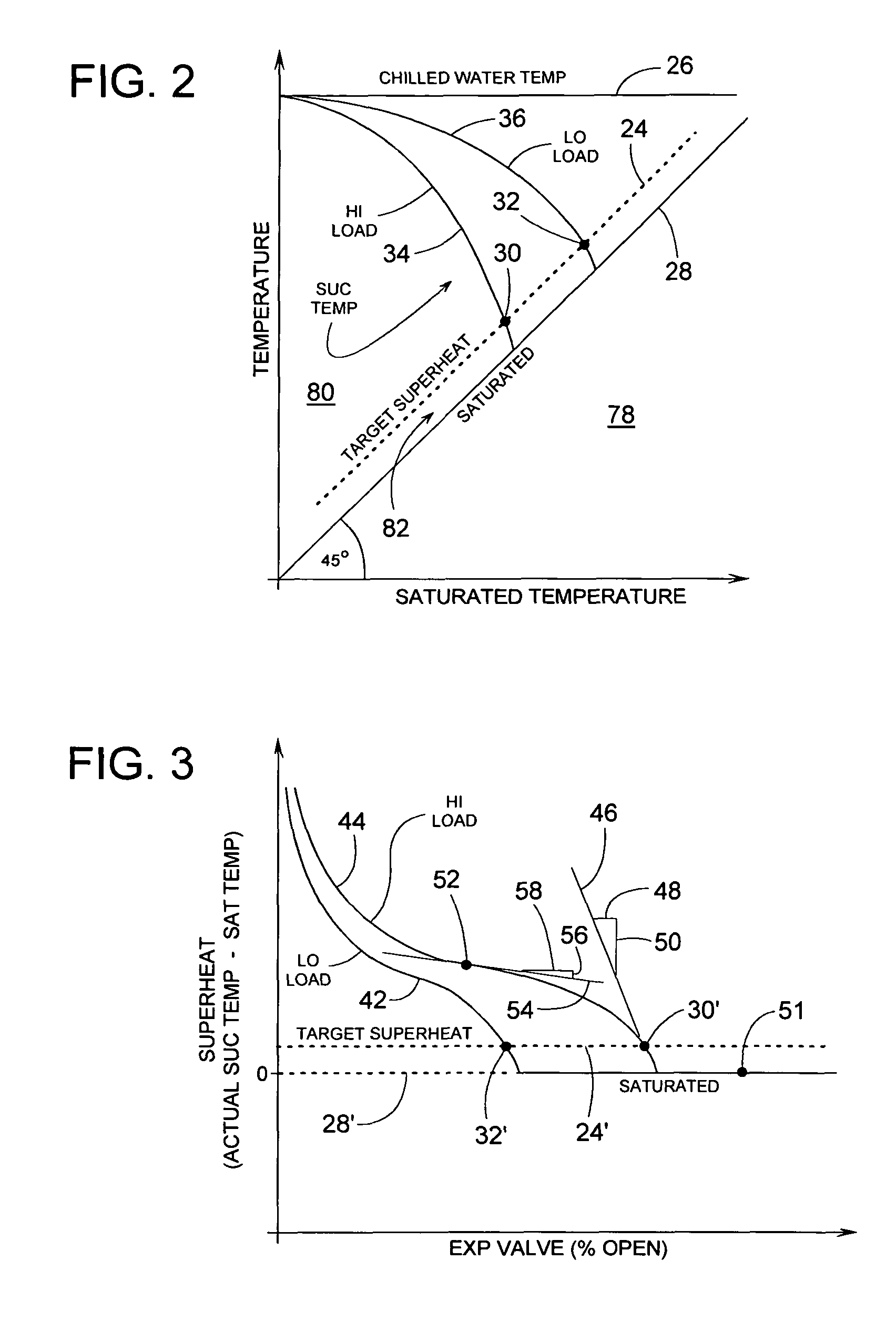Superheat control by pressure ratio
a technology of superheat control and pressure ratio, which is applied in the direction of refrigeration machines, machines using electric/magnetic effects, refrigeration safety arrangements, etc., can solve the problems of superheat-related controllers, chillers, and compressor damage, etc., to reduce superheat, reduce superheat, and slow down the increase of suction pressure
- Summary
- Abstract
- Description
- Claims
- Application Information
AI Technical Summary
Benefits of technology
Problems solved by technology
Method used
Image
Examples
Embodiment Construction
[0026]FIG. 1 schematically illustrates a controller 10 that regulates an electronic expansion valve 12 of a chiller 14 to maintain the refrigerant leaving a DX evaporator 16 at a desired or target superheat that is minimally above saturation. Electronic expansion valve 12 is schematically illustrated to represent any electrically adjustable flow restriction of which there are many different types well known to those of ordinary skill in the art. Controller 10 is schematically illustrated to represent any electronic or programmable device capable of performing the steps specified in this description and the claims. Examples of controller 10 include, but are not limited to, a computer, microprocessor, analog circuit, digital circuit, and various combinations thereof.
[0027]Chiller 14 is schematically illustrated to represent any refrigerant system that includes a compressor, a heat exchanger such as an evaporator for absorbing heat, a heat exchanger such as a condenser for releasing he...
PUM
 Login to View More
Login to View More Abstract
Description
Claims
Application Information
 Login to View More
Login to View More - R&D
- Intellectual Property
- Life Sciences
- Materials
- Tech Scout
- Unparalleled Data Quality
- Higher Quality Content
- 60% Fewer Hallucinations
Browse by: Latest US Patents, China's latest patents, Technical Efficacy Thesaurus, Application Domain, Technology Topic, Popular Technical Reports.
© 2025 PatSnap. All rights reserved.Legal|Privacy policy|Modern Slavery Act Transparency Statement|Sitemap|About US| Contact US: help@patsnap.com



